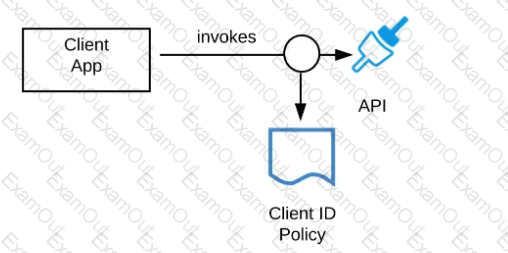A Platform Architect inherits a legacy monolithic SOAP-based web service that performs a number of tasks, including showing all policies belonging to a client. The service connects to two back-end systems — a life-insurance administration system and a general-insurance administration system — and then queries for insurance policy information within each system, aggregates the results, and presents a SOAP-based response to a user interface (UI).
The architect wants to break up the monolithic web service to follow API-led conventions.
Which part of the service should be put into the process layer?
Refer to the exhibits.

Which architectural constraint is compatible with the API-led connectivity architectural style?
An organization wants MuleSoft-hosted runtime plane features (such as HTTP load balancing, zero downtime, and horizontal and vertical scaling) in its Azure environment. What runtime plane minimizes the organization's effort to achieve these features?
Refer to the exhibit.

A developer is building a client application to invoke an API deployed to the STAGING environment that is governed by a client ID enforcement policy.
What is required to successfully invoke the API?
A customer wants to monitor and gain insights about the number of requests coming in a given time period as well as to measure key performance indicators
(response times, CPU utilization, number of active APIs).
Which tool provides these data insights?
An organization has implemented a Customer Address API to retrieve customer address information. This API has been deployed to multiple environments and has been configured to enforce client IDs everywhere.
A developer is writing a client application to allow a user to update their address. The developer has found the Customer Address API in Anypoint Exchange and wants to use it in their client application.
What step of gaining access to the API can be performed automatically by Anypoint Platform?
An API has been updated in Anypoint exchange by its API producer from version 3.1.1 to 3.2.0 following accepted semantic versioning practices and the changes have been communicated via the APIs public portal. The API endpoint does NOT change in the new version. How should the developer of an API client respond to this change?
What is a typical result of using a fine-grained rather than a coarse-grained API deployment model to implement a given business process?
An organization is implementing a Quote of the Day API that caches today's quote.
What scenario can use the GoudHub Object Store via the Object Store connector to persist the cache's state?
A business process is being implemented within an organization's application network. The architecture group proposes using a more coarse-grained application
network design with relatively fewer APIs deployed to the application network compared to a more fine-grained design.
Overall, which factor typically increases with a more coarse-grained design for this business process implementation and deployment compared with using a more fine-grained
design?



